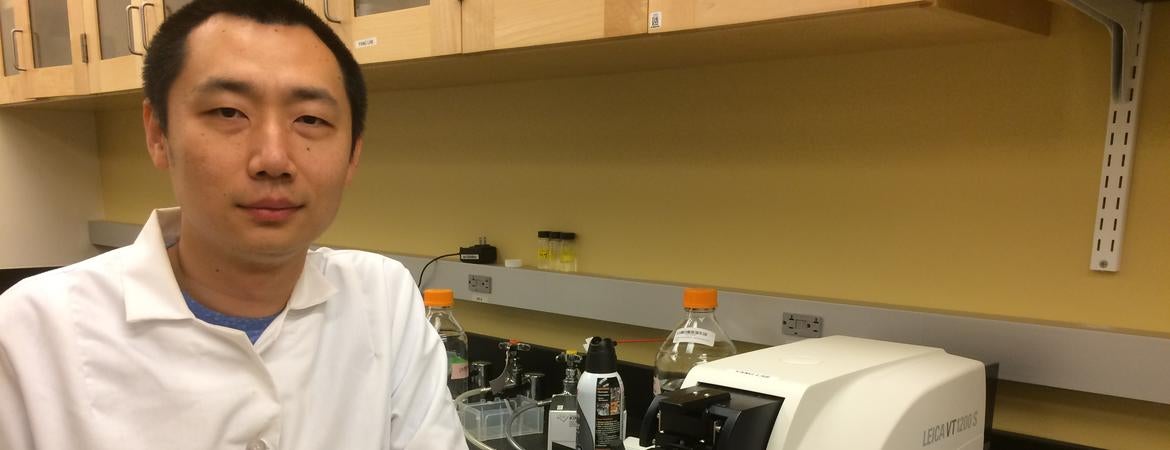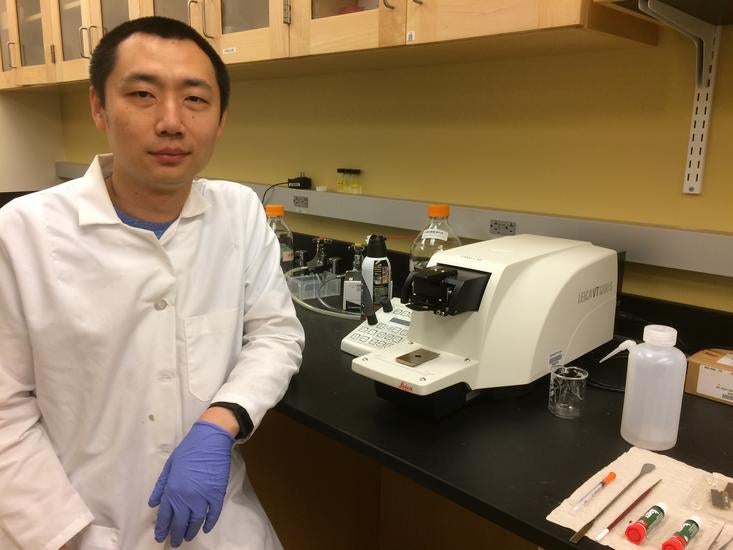
Neuromodulatory systems in the brain heavily influence behavioral and cognitive processes. Understanding how these systems modulate perceptual behavior is a crucial steppingstone toward unraveling their roles in brain functions.
One particular neuromodulatory system is the noradrenergic system. Dysfunction of this system is linked to several neurological disorders, such as attention deficit hyperactivity disorder and post-traumatic stress disorder, and is a main target of current drug-administered treatments. But how these drugs work is not well understood.
In a paper published in the journal Neuropharmacology, UC Riverside’s Hongdian Yang and colleagues provide evidence that activating and suppressing the noradrenergic system in mice affects behavior and motivation in different but not opposite directions, laying the groundwork for understanding why some drugs work while others fail in treating neurological disorders.
“We found that using drugs, commonly given to humans, to perturb the noradrenergic system in mice causally affects their motivational state and behavior,” said Yang, an assistant professor of molecular, cell and systems biology, whose research focuses on neural circuit mechanisms underlying sensory perception, with potential applications in addressing anxiety and stress-related neurological disorders. “Systemic activation and local activation of this system have different effects on behavior and motivation. Since drugs are administered in humans in a systemic manner, their possible off-target effects need to be considered in future work on drug design, drug effects, animal work, and interpreting results.”
The researchers found that both localized and systemic suppression of the noradrenergic system impaired tactile detection in mice by reducing motivation. They were surprised to find that while locally activating the system enabled the mice to perform in a near-optimal regime, systemic activation of the system impaired their behavior by promoting impulsivity.
The research paper is the first from the Yang lab since he joined UCR in 2016. Yang received his bachelor's degree in physics from China's Nanjing University, and his doctorate in biophysics from the University of Maryland, College Park. He did postdoctoral research at Johns Hopkins University.
Yang was joined in the research by Jim McBurney-Lin, Yina Sun, Lucas S. Tortorelli, Quynh Anh Nguyen, and Sachiko Haga-Yamanaka of UCR.
The research was supported by UCR startup funds, a UC Regents’ Faculty Fellowship, a Klingenstein-Simons Fellowship Award in Neuroscience, and grants from the National Institute of Neurological Disorders and Stroke to Yang.
The research paper is titled “Bidirectional pharmacological perturbations of the noradrenergic system differentially affect tactile detection.”
Read the original article online:
